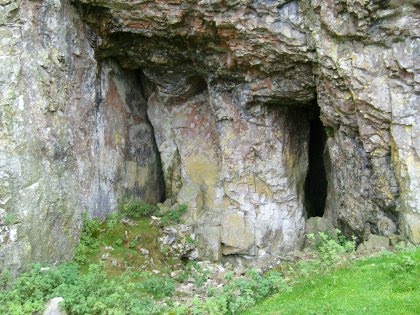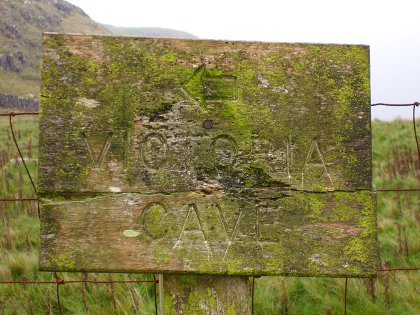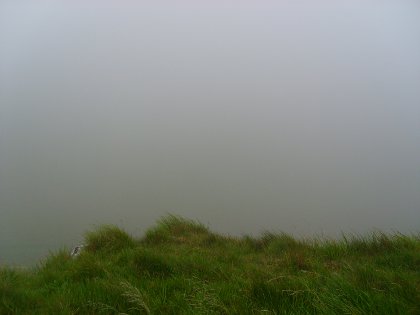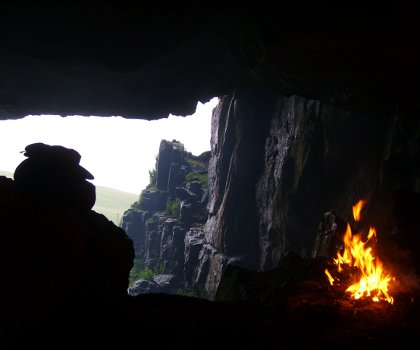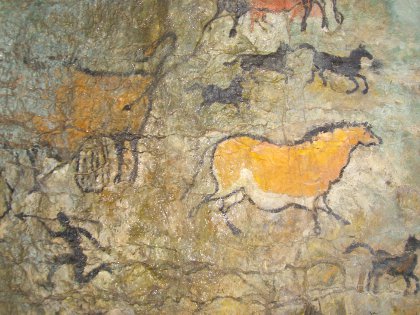Wednesday, 31 March 2010
Victoria Cave, King's Scar
Victoria Cave was originally a small opening in King's Scar known as the Fox Holes. In 1837 Michael Horner followed a dog through the opening and discovered a series of chambers. The artefacts discovered inside let to a full scale excavation, enlarging the entrance to it's present size.
The excavation revealed the story of the cave through the ages. 120000 years ago the cave had been a hyena den. Towards the end of the last ice age the cave was a place of refuge for hunter-gatherers and in Romano-British times the cave was used as a shrine.
CaveMaps.org has a detailed map of Victoria Cave. :-)
Tuesday, 30 March 2010
Caving for the First Time
I still remember my first real adventure. It was October 1991. I'd found two caves on the Ordinance Survey map and decided to explore them, Victoria Cave and Jubilee Cave. Undeterred by the pouring rain I collected a box of candles from the hardware store. :-)
Heading up Constitution Hill and along a footpath I soon reached Clay Pits Plantation. A wild desolate landscape waited for me. Next along a track towards the caves. By the time I arrived darkness had fallen.
I explored the rightmost passage of Jubilee Cave. The candlelight didn't penetrate far, but I could see the cave was far from what I expected. Water trickled down the walls. It was muddy, wet and strewn with boulders. I'd been expecting somewhere warm and dry with a floor of fine sand!
Outside again I found my way through the darkness to Victoria Cave, a huge chasm in the face of the scar. I could only see one side of the cave and the roof was hidden in the shadows. I followed the wall. More water, more mud and two passages to explore - one very low, the other very narrow.
After leaving Victoria Cave I wandered completely lost in a marshy area before I stumbled upon some ruins where I decided to take shelter from the rain. :-)
Monday, 29 March 2010
Lost in the Mist...
I was hoping to explore the cliffs above Bivi Cave but a sudden change in the weather put a stop to my plans. :-( Luckily I always carry a map and compass otherwise I could have ended up anywhere!
Sunday, 28 March 2010
Friday, 26 March 2010
Prehistoric Cave Painting
I took this photo of a cave painting a few months ago. Is it prehistoric? Take a closer look and let me know what you think and why :-)
Inside Bivi Cave
Here's a closer look at Bivi Cave which is close to the footpath from Settle to the Attermire area.
There's a great view from inside Bivi Cave looking towards Sugar Loaf Hill. The cave is only a couple of metres deep so technically it's classed as a rock shelter.
Wednesday, 24 March 2010
Bivi Cave, Attermire
In Walks in Limestone Country, Wainwright describes Bivi Cave as
a small cave so snug and dry a refugé in wet weather that one regrets going past on a fine day.
Personally I think the nearby Spider Cave is a much better place to shelter. :-)
Tuesday, 23 March 2010
Actually It's Just Up There...
I spotted this strange sign on Burnt Hill Lane in Louth:
...Actually it's just up there - head up there and it's on your left-hand side, past the doctor's, across the car park...
It's one of thirteen signs created by artist Rupert Clamp for the Lost in Louth art project. Rupert pretended to be lost in Louth, asking for directions. He created the signs from the directions people gave him.
Saturday, 20 March 2010
More Spring Flowers: Primroses
I didn't have to go far to find these primroses, they were hiding away in a shady area of the garden. Now I just need to find some daffodils to complete my collection of Spring flowers :-)
Friday, 19 March 2010
Invisible Lines Beneath Our Feet
I noticed a curious message in the pavement when I visited Louth in Lincolnshire:
- magnetism - the line that runs from pole to pole beneath out feet.
Wednesday, 17 March 2010
Snowdrops - Spring is Here
There are crocuses, daffodils and snowdrops in the garden and we've just had three fantastic sunny days. It can only mean one thing, Spring is finally here :-)
Tuesday, 16 March 2010
Lights in the Night Sky
Whenever I see a bright light in the night sky I can't resist taking a picture, even though I know the photo is likely to show just a blur of light. The collage shows pictures of Mars, Venus and a few unidentified celestial lights.
Sunday, 14 March 2010
Mystery Nature Photo (Pollen)
On Saturday I issued a challenge to identify a mystery photo. Thanks for taking part and thanks for all the great guesses, some of which are quite entertaining! Chuck from Secondary Roads was the first to recognise the pollen. Then Sheila from A Postcard a Day identified the flower as a crocus. Nice work :-)
Friday, 12 March 2010
Heading Downstream
Have you ever wondered what it's like to be a duck, drifting slowly downstream without a care in the world?
Thursday, 11 March 2010
The Victoria Memorial
The Victoria Memorial stands outside Buckingham Palace and was sculpted by Sir Thomas Brock. The Statue of Queen Victoria looks east across Saint James Park.
Tuesday, 9 March 2010
The Church of Saint Lawrence
The church sits on the site of an Iron Age hill fort in the Chilterns, although it's difficult to spot any trace of the fort using Google maps. It's claimed the sphere on the tower was used as a secret meeting place by members of the Hellfire Club. Close to the church is the hexagonal Dashwood Mausoleum build by one of the Hellfire Club's founders, Sir Francis Dashwood.
Monday, 8 March 2010
Common Blackbird
I've never been much good at taking photos of birds, so I'm always happy for a bit of help from nature. In winter the trees leave nowhere for the birds to hide and eventually I manage to catch a picture or two. I spotted this blackbird this morning while exploring the site of Sleaford Castle.
Saturday, 6 March 2010
The Great Gatehouse at Hampton Court
The Great Gatehouse is the focal point of Hampton Court's west front. Originally the towers would have been topped with cupola. Hampton Court was built for Thomas Wolsey who later gave it as a gift to King Henry VIII.
Thursday, 4 March 2010
How Many Courtyards at Hampton Court?
Fountain Court was designed by Sir Christopher Wren and is one of the many courtyards at Hampton Court Palace. Sir Christopher is perhaps better known as the architect of Saint Paul's Cathedral.
How many courtyards are there at Hampton Court Palace? As I explored I kept discovering more until I eventually lost track! How many can you see on the aerial photo? After you've counted the courtyards can you find the famous maze?
Wednesday, 3 March 2010
Grey Squirrel
This squirrel seemed surprised to see me. He regarded me curiously for a moment then scurried off to the nearest tree. Thankfully he hesitated long enough for me to snap a couple of photos.
Tuesday, 2 March 2010
The Astronomical Clock
The Astronomical Clock at Hampton Court Palace was made for Henry VIII in 1540 by the French clockmaker Nicholas Oursian. The clock shows the time of day, the date, the phase of the moon and the time of high tide at London Bridge.
